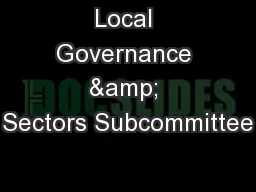PPT-Initial Analysis of KC Rising Sectors’ Demand for Human
Author : ellena-manuel | Published Date : 2017-03-18
Common Sector Competencies Task Force AUGUST 19 2015 Methodology Convert the KC Rising sectors which are industrybased into the occupations comprising them Pass
Presentation Embed Code
Download Presentation
Download Presentation The PPT/PDF document "Initial Analysis of KC Rising Sectors’..." is the property of its rightful owner. Permission is granted to download and print the materials on this website for personal, non-commercial use only, and to display it on your personal computer provided you do not modify the materials and that you retain all copyright notices contained in the materials. By downloading content from our website, you accept the terms of this agreement.
Initial Analysis of KC Rising Sectors’ Demand for Human: Transcript
Download Rules Of Document
"Initial Analysis of KC Rising Sectors’ Demand for Human"The content belongs to its owner. You may download and print it for personal use, without modification, and keep all copyright notices. By downloading, you agree to these terms.
Related Documents














